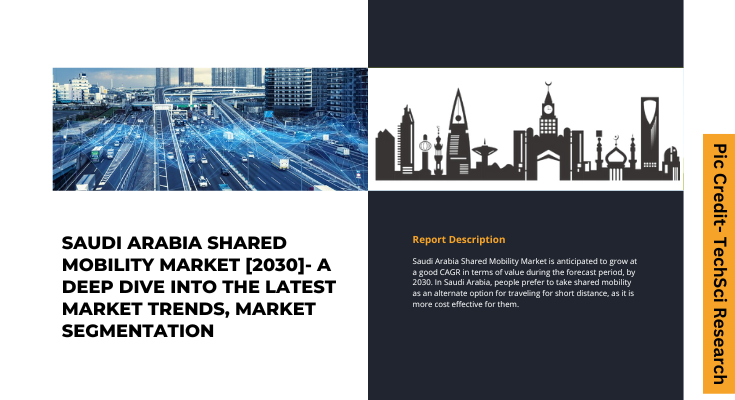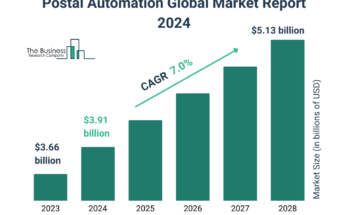According to the TechSci Research report, “Saudi Arabia Shared Mobility Market–Industry Size, Share, Trends, Competition, Opportunity and Forecast, 2018-2030F“, the Saudi Arabia shared mobility market is anticipated to grow at a good rate in the coming year. The cost of sharing vehicles has significantly decreased due to the expansion of online platforms, encouraging customers to book a ride, rather than taking the public transportation system. The country’s holy places, like Mecca and Medina, see a huge number of visitors during Eid Al-Fitr and Eid Al-Adha festivals.
This is another reason for the expansion of the shared mobility market. The shared mobility market has grown steadily in recent years in Saudi Arabia. However, the COVID-19 pandemic outbreak and the ensuing restrictive measures, such as the travel ban and the suspension of Hajj and Umrah pilgrims, did hurt the business in the COVID-19 year 2020. While the shared mobility market has remained largely stable during and after the COVID period, other businesses have suffered a lot.
The market for shared mobility is heavily influenced by rising disposable income since consumers with higher disposable incomes are more willing to spend on practical shared services. The need for shared mobility services has increased as a result of this trend, which has also increased travel and family outings. Clean energy mobility is a growing trend in Saudi Arabian cities and is expected to continue for the foreseeable future. Electric vehicles will become a preferred means of city transportation if they are incorporated into shared mobility operators’ fleets. This aspect will also bring operational cost savings over the long and medium period.
In Saudi Arabia the sales of passenger cars were around 4,75,837 in the year 2021 due to which the passenger car segment has the highest market share in the shared mobility market. The sales of commercial vehicles in 2021 were around 80,722, due to which commercial vehicles also have a good presence in the shared mobility market. The number of users in the shared mobility from the corporate sector is more than 50% in the market, and the online segment has more than 80% market share compared to the offline users in the Shared Mobility Market.
Browse more than market data Figures spread through XX Pages and an in-depth TOC on the “Saudi Arabia Shared Mobility Market” @ https://www.techsciresearch.com/report/saudi-arabia-shared-mobility-market/14596.html
Apart from 2020, the nation has seen an increase in the number of tourists, making the tourism sector one of the main contributors to shared mobility. Corporate clients and visiting executives are the primary target market for the country’s shared mobility sector, and this customer segment typically prefers passenger cars for city transportation. The market for shared mobility is growing because of these factors. After the COVID outbreak in Saudi Arabia, tourist, and business tourists were practically stopped after numerous lockdowns and restrictions across many the country. Therefore, the shared mobility sector in the country struggled during the peak of the COVID-19 outbreak. However, the nation is now a secure alternative for tourists from around the world, boosting the market in the near future.
Since sharing a vehicle is more affordable than purchasing a new one, many businesses and the government in Saudi Arabia are driving the growth of the shared mobility market. There are many private companies there that require passenger cars and two-wheelers for long-term usage. Renting a vehicle has numerous benefits over purchasing a new one, including the cost-saving advantage because the cost of each ride is set and is excessively low. Future growth in the share mobility market is anticipated to be significant.
In Saudi Arabia, logistics and corporate companies are pacing year by year, and thus medium shared mobility services are escalating as passenger cars and two-wheelers are easy to handle for logistics activities. Shared mobility companies are adding passenger cars and two-wheelers to their company fleet at a very fast rate to gain more and more market share, among the other market players.
Some of the major players operating in the Saudi Arabia Shared Mobility Market include:
- Careem Inc
- Swvl Holdings Corp
- ekar
- KOI Ride
- Udriver
- FENIX
- Saudi Transport & Investment Co. (Mubarrad)
- Telgani
- Uber Technologies, Inc.
- KDDAD TAXI SERVICE
To Download FREE Sample Pages of this Report📥 @ https://www.techsciresearch.com/sample-report.aspx?cid=14596
Customers can also request for 10% free customization on this report.
“Many shared mobility companies are increasing their vehicle fleet and adding premium vehicles to offer the users a better experience. Shared mobility companies are adding new vehicles and premium vehicles to increase their market share in Saudi Arabia. Many investors are also investing in shared mobility companies because of the potential in this sector and business opportunity. Which will further help in driving the Saudi Arabia Shared Mobility Market in the coming year.”, said Mr. Karan Chechi, Research Director with TechSci Research, a research-based global management consulting firm.
“Saudi Arabia Shared Mobility Market By Vehicle Type (Passenger Car, Two-Wheeler, Micro Mobility), By Service Type (Ride Sharing, Ride Source, Private), By Booking Type (Online, Offline), By Business Model (P2P, B2B, B2C), By Vehicle Propulsion (IC Engine Vehicle, Electric Vehicle) By Region, Forecast & Competition, Opportunities, 2018- 2030F has evaluated the future growth potential of Saudi Arabia Shared Mobility Market and provides statistics & information on market size, structure, and future market growth. The report intends to provide cutting-edge market intelligence and help decision-makers take sound investment decisions. Besides, the report also identifies and analyzes the emerging trends along with essential drivers, challenges, and opportunities in the Saudi Arabia Shared Mobility Market.
You may also read:
Autonomous Vehicle Market – Trends, Share [Latest] & Forecast
Asia-Pacific Shared Mobility Market Analysis, Development [2030], Key Terms
Asia-Pacific Fuel Cell Electric Vehicle Market Outlook & Forecast [2030]
Table of Content-Saudi Arabia Shared Mobility Market
- Introduction
1.1. Product Overview
1.2. Key Highlights of the Report
1.3. Market Coverage
1.4. Market Segments Covered
1.5. Research Tenure Considered
- Research Methodology
2.1. Objective of the Study
2.2. Baseline Methodology
2.3. Key Industry Partners
2.4. Major Association and Secondary Sources
2.5. Forecasting Methodology
2.6. Data Triangulation & Validation
2.7. Assumptions and Limitations
- Executive Summary
3.1. Market Overview
3.2. Market Forecast
3.3. Key Regions
3.4. Key Segments
- Impact of COVID-19 on Saudi Arabia Shared Mobility Market
4.1. Impact Assessment Model
4.1.1. Key Segments Impacted
4.1.2. Key Regions Impacted
- Voice of Customer Analysis
5.1. Factors Influencing Purchase Decision
5.2. Brand Awareness
5.3. Brand Satisfaction Level
- Saudi Arabia Shared Mobility Outlook, 2018-2030
6.1. Market Size & Forecast
6.1.1. By Value & Volume
6.2. Market Share & Forecast
6.2.1. By Vehicle Type Market Share Analysis (Passenger Car, Two-Wheeler, Micro Mobility)
6.2.2. By Service Type Market Share Analysis (Ride Sharing, Ride Source, Private)
6.2.3. By Business Model Market Share Analysis (P2P, B2B, B2C)
6.2.4. By Vehicle Propulsion Market Share Analysis (IC Engine Vehicles, Electric Vehicle)
6.2.5. By Booking Type Market Share Analysis (Online, Offline)
6.2.6. By Regional Market Share Analysis
6.2.6.1. Northern & Central Region Market Share Analysis
6.2.6.2. Western Region Market Share Analysis
6.2.6.3. Eastern Region Market Share Analysis
6.2.6.4. Southern Region Market Share Analysis
6.2.7. By Company Market Share Analysis (By Value, 2022)
6.3. Saudi Arabia Shared Mobility Market Mapping & Opportunities Assessment
6.3.1. By Vehicle Type Market Mapping & Opportunity Assessment
6.3.2. By Service Type Mapping & Opportunity Assessment
6.3.3. By Business Model Mapping & Opportunity Assessment
6.3.4. By Vehicle Propulsion Mapping & Opportunity Assessment
6.3.5. By Booking Type Mapping & Opportunity Assessment
6.3.6. By Regional Market Mapping & Opportunity Assessment




